Results 2,471 to 2,480 of 12096
Thread: Anandtech News
-
01-07-13, 11:00 AM #2471
Anandtech: AT&T 2013 Developer Summit Keynote: Live Blog
While 2013 CES is going full tilt, AT&T also holds its developer event and keynote at the Palms, in almost the same place where we were last night for NVIDIA. We just took our seats for the AT&T 2013 Developer Summit Keynote, stay here for the live blog. 

More...
-
01-07-13, 11:30 AM #2472
Anandtech: ASUS' Qube with Google TV
It looks like a lot of companies are going to be dipping their toes in the TV waters this year. ASUS just announced Qube, its first Google TV device. We're on our way to meet with ASUS but for now we do have a shot of the Boxee Box-like Qube by ASUS. The Qube apparently integrates voice and motion control, although it's not immediately apparent how the latter works (it seems to be via an included remote). The name Qube comes from the cube UI that users can control with the remote or an Android app.
No word on specs yet, but we'll be sure to update this post as soon as we have more information.

More...
-
01-07-13, 12:30 PM #2473
Anandtech: Asus Announces ROG ARES II Video Card: Dual Radeon HD 7970GE On A Single C
Dual GPU video cards are nothing new, but there are very few companies that do it with the level of flair (and dare we say overkill) of Asus. Along with their standard reference-derived designs for products such as the GTX 690 and Radeon HD 6990, the company also produces one or two ultra-luxury custom designs that push the envelope in terms of performance, features, power, and size. These cards have been released under the ARES (AMD) and MARS (NVIDIA) brands, with the most recent entry being the dual-GTX580 based MARS II in 2011.
Now with CES upon us Asus has announced their next custom dual-GPU card, the Asus ARES II. Like the Radeon HD 5870 based ARES (I), the ARES II is effectively two Radeon video cards on a single board. Specifically, Asus is building a single card Radeon HD 7970 GHz Edition crossfire solution, packing two overclocked 7970GE GPUs and 6GB of memory (3GB per GPU) on to a single card. Clockspeeds are at 1050MHz for the core and 6.6GHz for the memory, 50Mhz(5%) and 600MHz (10%) over a stock 7970GE respectively.
As to be expected, power and cooling requirements for such a card are quite high, which is where Asus’s customizations and expertise come into play. Feeding the beast will be 3 8pin PCIe power connectors, and with another 75W from the PCIe slot itself we’re looking at total power consumption somewhere in the neighborhood of 500W (roughly twice that of a single 7970GE). Asus uses their own Super Alloy Power delivery system here, with a total of 20 power phases between the various GPUs and memory components.
Meanwhile cooling the beast will be something even more outlandish and unique for a 1st party video card: closed loop liquid cooling augmented with standard air cooling. Rather than going with an even bigger HSF like the ARES (I) or competitor PowerColor’s Devil13, Asus is sticking with a dual-slot card and moving most of the cooling duties to a 120mm radiator. The radiator itself is a single 120mm block with a pair of fans in a push-pull configuration, very similar to aftermarket CPU coolers we’ve reviewed in the past such as the Corsair H80i. These closed loop coolers have proven to be extremely effective in the past so it will be interesting to see how Asus’s implementation plays out, particularly with the uniquely high power/heat properties of a dual-GPU video card. Meanwhile Asus also has an 80mm fan on the card itself (thereby making this a hybrid configuration) and based on their description we believe this covers cooling the memory and VRMs, while the closed loop cooler is dedicated to the GPUs.
Asus for their part points out that by going with a closed loop cooler they can keep the size of the card down, making it compatible with more cases. Certainly at 11.8” long and two slots wide the card is by no means small, but this configuration does mean that it should be possible to squeeze the card into some mATX enclosures that aren’t accessible to triple-wide cards. Alternatively it will be much easier to set up a pair of these cards in Crossfire for a 4-way GPU configuration, this being the bane of triple-wide cards on most ATX motherboards.
Finally, like past ARES and MARS cards, the ARES II is once again a limited edition product with Asus constructing just 1000 cards, each numbered and sold in a collectable fashion. Unfortunately Asus hasn’t announced specific pricing or a launch date, but based on their prior cards $1500 is not out of the realm of possibility.
  Asus ARES II PowerColor Devil13 HD7990 Radeon HD 7970 GE Stream Processors 2 x 2048 2 x 2048 2048 Texture Units 2 x 128 2 x 128 128 ROPs 2 x 32 2 x 32 32 Core Clock 1050MHz 925MHz 1000MHz Boost Clock 1100MHz N/A 1050MHz Memory Clock 6.6GHz GDDR5 5.5GHz GDDR5 6GHz GDDR5 Memory Bus Width 2 x 384-bit 2 x 384-bit 384-bit VRAM 2 x 3GB 2 x 3GB 3GB TDP A Lot A Lot 250W Transistor Count 2 x 4.31B 2 x 4.31B 4.31B Manufacturing Process TSMC 28nm TSMC 28nm TSMC 28nm

More...
-
01-07-13, 02:00 PM #2474
Anandtech: LG bringing UltraHD, OLED and more Google TVs to your living room
LG President and CEO Wayne Park kicked off their CES press conference by reminding us that the brand’s presence in North America was launched a decade ago at CES. The company itself had been a presence in consumer electronics for sometime, but the LG brand was brought here just in time to catch the mounting wave of smartphones and other smart devices, and though we’ve seen them falter at times, they’ve consistently gained market share in some of the largest consumer electronics categories. In 2012, they had several important design wins, from the LG Google TV, to the Optimus G and Nexus 4. Worldwide they also saw a number of big wins in the mobile space with their phone/tablet mash-up the Optimus Vu and their L-series of mid-range smartphones. So, what do they have in store for us in 2013? 
The answer is a bit guarded, sadly. No new LG Mobile announcements are in store for CES; instead, we were reminded of the success they’ve had with the aforementioned G and Vu, and their successful collaboration with Google to produce the Nexus 4. They emphasized that their approach to software design is aimed at improving user experience through multitasking and feature adds that target a user’s interests. We’ve always found their skins a bit of an acquired taste, and there is pretty much universal preference for stock Android amongst AT editors, but we’ll give them some credit for trying. 
 

 
The other Android news involved their continued collaboration with Google for their Google TV powered Smart TVs. When the Google TV program was announced, we expected it to function as a tightly controlled ecosystem, with hardware and software specifications strictly laid out and enforced, and partners differentiating with changes in form factor and control paradigms. Think Windows Phone and not … you know, Android. What we’ve seen, though, has been something unique, and we expect this to change continue. No longer is Google TV a strictly defined thing, rather it is the implementation of search, recommendations and Youtube to build a television experience that seeks to break the old paradigm and provide a more “when you want it, how you want it” experience. And featured squarely in every Google TV device, will be Google’s content portal, YouTube. The success of Google TV will be up for discussion for quite some time. But Google and LG are putting some new tools to use to further their efforts in 2013. 
LG’s stable of motion control techniquesis expanding to provide even more control paradigms. Last year at CES, LG previewed a small gaming device that used cameras to implement Wii like motion control for causal gaming. The research they put in to these efforts are being put to use n their 2013 Google TV line-up for hand based gesture controls, first by allowing you to select a channel by tracing the digits with your finger. Despite the preponderance of video streaming options, the vast majority of television watching still happens through traditional broadcast and cable providers. So maybe there’s some dividend to be paid to providing a more “natural” way to switch between channels, than simply punching buttons on a remote. This will be in addition to the use of the Magic Wand remote control for pointing and click actions. LG will also be refining the remote by bringing voice control into the remote itself. The impact on battery life could be considerable, since presumably an SoC will be housed in the device, and the results will be transmitted through Bluetooth to the set for action. The added benefit to this method is a move from command driven voice control (“Watch ESPNU”) to a natural language method (“I’d like to watch some college football.”). 
 
These are still early days in the evolution of the television, revolutionary talk not withstanding. Whether any of the techniques LG is implementing today will have any profound impact on the market is something to assess in years, not today or tomorrow, but we’re always glad to see someone trying, rather than leaving a market stagnant. 
We don’t cover televisions in any appreciable way, in part because they are commodities in the very worst way, with a tendency to drive to the bottom of the market. Our readers, though, will recognize some of the key tech being introduced this year. This year LG is bringing two TV technologies to the market, and realistically, these may be the first two technologies to justify a new set in a long time. 
First, we have the long (long) awaited introduction of “mass market” OLED televisions. LG will bring its 55” OLED 1080p 3D Smart TV to the US this March, for a recommended price of $12,000. While that cost prohibitive price will keep it off shelves at your local Walmart or Best Buy, it is distinctly in the realm of reason for A/V enthusiasts. If LG’s OLED fabrication techniques are ready for that market, then it is possible we could see similar sets landing on big box store shelves within a few years. 
 
The other big reveal for CES 2013 is production sales of their 84” UltraHD sets, and two new sizes (55 and 65”) being introduced. Pricing wasn’t provided, but sales should start in March.
Lastly, we’ll take a quick look at LG Display’s latest plans for computer displays. LG has proven that they are willing to push themselves when it comes to risky design and feature choices, and they’re planning on continuing that push in 2013. LG will expand their line-up of 21:9 ultra-widescreen displays, providing added screen real-estate for professionals and gamers alike. They’ll also be expanding their 2560x1440 (WQHD) offerings, something that’s sure to curl the toes of our Ian Cutress, our Senior Motherboard Editor. The technologies that are bringing HiDPI displays to our phones and tablets are sure to make an impact in the computer display space, and this could be the year that we usher in an era of similar computer displays while bidding adieu to the cheap 1080p panels that have plagued us for so long. Touch displays will also be on offer from LG, though some of the samples we saw at the brief demo were a bit glossier than I would consider ideal. 
 
The show is just getting started, we’ll try to get some more hands-on time with all that LG has at the show shortly, for now, stay tuned. 
Gallery: LG bringing UltraHD, OLED and more Google TVs to your living room






More...
-
01-07-13, 02:30 PM #2475
Anandtech: Netgear at CES 2013: Connected Entertainment Solutions (Google TV and More
Netgear's press conference at CES 2013 is kicking off as I write this, and the focus this time around seems to be heavily in the connected entertainment solutions area. We have already seen Netgear's Google TV device pass by the FCC, and the device (NeoTV PRIME GTV 100) is officially launching today for $130. This is $30 more than Vizio's Google TV device and we are very interested in checking out what the extra $30 nets the consumers. The aVia media player app comes pre-installed, and it should be possible to install other market apps also.
{gallery gtv100}
Existing NeoTV players (NTV300, NTV300S and NTV300SL) are also being updated with a Slinglayer app which enables users to enjoy live TV with placeshifting.
In an interesting move, Netgear has teamed up with Digital Keystone to deliver service providers with a platform to provide Neomedia, a universal media gateway technology which doesn't require middleware in the consumer premises equipment, yet manages to deliver broadcast and personal content to multiple screens. The important capabilities include in-home and cloud-based access to live and recorded linear TV services, secure playback on retail and thin IP clients, aggregation of live TV, VoD and network DVR services. We will try to learn more about this platform when we meet up with Netgear later this week at CES.
Netgear purchased VueZone, a consumer IP camera vendor, last year. Today, a new product has been introduced under the VueZone brand, the VZCN2060. The add-on night vision camera consist of two parts, an AC-powered IR lamp along with a wire-free infrared camera and will retail at $130. Home monitoring solutions using IP camera are taking off in a big way, and Netgear's wire-free solution with VueZone cameras [ www.netgear.com/vuezone ] is quite innovative.
{gallery vuezone}
Netgear is also introducing some networking equipment at the show. These include the WN3500RP dual-band Wi-Fi range extender (wall plug edition) which also has support for AirPlay / DLNA music streaming when connected to speakers, the D6200 WiFi DSL modem router with 867 Mbps 802.11ac and 300 Mbps 802.11n and an integrated DSL modem and a Music Extender kit (XAUB2511) for playing music using AirPlay from any computing device to any stereo system. Stay tuned for more information after we get some hands-on time later this week with what Netgear has to showcase at CES.

More...
-
01-07-13, 02:30 PM #2476
Anandtech: Hands On with ASUS' Transformer All-in-One (P1801)
ASUS showed us a near production-ready sample of its Transformer All-in-One PC. The machine features a multitouch 18.4" 1080p IPS display driven by two independent systems. In the base, a Core i5/i7 machine running Windows 8, and in the display itself there's a Tegra 3 Android system. There's a physical button on the right side of the system that switches display inputs between the two systems. Since you're just changing display inputs the switching lag is similar to how long it takes to switch between systems on a multi-input monitor.
You can undock the 18.4" display, transforming it into a giant Tegra 3 Android tablet (running 4.1.1). When undocked you're also able to wirelessly stream (over Miracast or some alternative) the Windows 8 base's display over to it, making it a giant Windows 8 tablet if you prefer. Both the base and the display/tablet have their own storage obviously. 
The tablet experience is surprisingly reasonable, although cradling an 18.4" tablet can be an issue over the long haul. Thankfully ASUS equipped the display/tablet with an elegant kickstand. With the display detached, you can also use the Core i5/i7 base to drive a separate external display if you'd like.
The display has an integrated battery which ASUS claims will power the tablet for around 4 - 5 hours. 
Gallery: Hands On with ASUS' Transformer All-in-One (P1801)






More...
-
01-07-13, 04:30 PM #2477
Anandtech: Hands on With NVIDIA's Project Shield
Anand and I just spent some time playing with NVIDIA's recently announced Project Shield, which is NVIDIA's portable handheld gaming device home to the also just-announced Tegra 4 SoC (4x ARM Cortex A15). I came away pretty impressed with Project Shield ergonomics after initially going in very skeptical (like GPU editor Ryan Smith) about how 38 watt-hours of batteries, a display, Tegra 4, and all the accompanying hardware could possibly feel comfortable stuffed into what boils down to a game controller.
First off, Shield isn't nearly as heavy as I thought it would feel in the hands. I expected Shield to feel very dense, instead the device doesn't feel much different from a wireless Xbox 360 controller with the rechargeable battery pack. I made a point of holding onto the Shield the entire time in a few different positions and didn't feel my hands or arms fatiguing at all. NVIDIA carefully positioned the batteries right around the palm areas, so the heaviest parts of the device are right in-axis with ones palms and arms rather than being elsewhere that would torque one's grip. There's something about the construction that feels balanced and masks the fact that this is actually a sizeable piece of hardware. Shield will have a soft touch bottom and different top texture finish, this first version we played with did not.
Gallery: NVIDIA's Project Shield - Hands On





NVIDIA was eager to point out that both the D-Pad, triggers, and bumpers are all in the process of being tweaked and tuned, and that the spring preloads and click points on the Shields we played with were nowhere near final. This is good to hear as the D-Pad at present definitely needed to be less mushy and more communicative, we're told this will be replaced with a much more responsive one before Shield is finalized. I didn't have a problem with the analog sticks but would love to feel alignment nubs or texture on the domes. 
My biggest thoughts were framed around the placement of the two analog sticks, which at present is places the tops of them in the plane of the buttons and D-Pad. This initially felt very alien, until I realized this is done because the display needs to close shut (the analog sticks would otherwise protrude through the screen) but felt a little bit awkward. I'm used to the 360 controller personally, which has analog sticks that protrude above the plane of the buttons. I can see one getting used to this as it feeling awkward is simply an artifact of my prior exposure and trained response to the 360 controller. 
The 720p 5-inch "retinal" display indeed exceeded my visual acuity and was hard to pick out individual pixels on, though I still think there's too much bezel on Shield that should be taken up with more display. Something like a 5.5" 1080p display would make much more sense, but that's probably reserved for another iteration. The biggest concern is how smaller features on PC games played back on the Shield would be difficult to pick out. NVIDIA claims it will mitigate this by working with game developers on appropriate titles or offering a pinch to zoom feature to let users read small elements. Obviously some games with lots of text (they offered the example of EVE Online) can't possibly work perfectly, but I had no problems playing a few levels of Assassins Creed 3 and Black Ops 2 on Shield. I could see some H.264 artifacts while playing on Shield, higher bitrates could solve that problem easily. 
Wireless connectivity on the Shield is courtesy Broadcom's latest BCM43241 which is 2x2:2 802.11a/b/g/n, which is the right thing to do in a platform that so strongly leverages wireless display and control. Responsivity while playing PC games on the Shield was extremely good, I couldn't detect any lag. 
At the front of the Shield is a small gap and grille, it turns out that heatsink in the NVIDIA press event video was in fact real, as air is drawn from the front of the Shield, over the heatsink, and exhausted out the back. There is indeed a fan inside, albeit a small one. NVIDIA says it won't come on all the time during normal use, and after playing a few Android games natively (Hawken) on the device this seemed to be the case. One Shield left in the sun did have the fans kick on though, which are essentially inaudible. I didn't actually feel Shield get hot at all during use, but that heatsink wasn't just for show in the press event video/demo, it's real.
At the very back are the microSD, microHDMI, microUSB, and headphone jack. I'm told these are also changing slightly and would honestly like to see the headphone jack come around to the front. 
What really struck me about the Shield was how very far from ergonomic the device appears, and yet how surprisingly comfortable it is to hold. NVIDIA nailed the underside ergonomics almost perfectly, there's a small ledge for your fingers to rest on, and the palm cups are indeed reminiscent of the 360 controller. 
Android 4.2.1 on the Shield felt extremely responsive and fluid. I am very impressed with browser scrolling in both Chrome and Browser.apk, the latter of which is now a huge optimization target for NVIDIA. The rest of the UI was also very fluid. 
We recorded a video of gameplay on the Shield and are uploading it as fast as CES connectivity will afford. 

More...
-
01-07-13, 05:30 PM #2478
Anandtech: Netgear Selects Broadcom HPAV Solution for Powerline Products
HomePlug and G.hn are tussling it out to emerge as the de-facto powerline standard, but HomePlug has enjoyed a lot of success as the incumbent. In the North American market, Intellon was the pioneer. They were later acquired by Atheros, who were then acquired by Qualcomm. Almost all PLC (Powerline Communication) devices shipping directly to consumers so far have been based on Intellon / Atheros chipsets. One of the exceptions was the Belkin's PWLAV500 solution based on Gigle Semiconductor's silicon. Gigle was later acquired by Broadcom.
Netgear has been one of the leading vendors of powerline communication products, and so far, they have all been based on Atheros silicon. Today, Broadcom announced that the latest Netgear powerline adapters XAV1201, XAV1301, XAV1401, and XAV1601 are all powered by the BCM60321.
It must be noted that the BCM60321 is a HPAV 1.1 solution and provides PHY rates of up to 200 Mbps. The BCM60321 is a monolithic PLC chipset with an integrated AFE (Analog Front End) manufactured in a 40nm process. This should lower the BOM cost and enable a cheaper powerline adapter for the consumers. Interoperability with all existing PLC adapters (based on Qualcomm Atheros's firmware version 3.1 or later) is guaranteed.

More...
-
-
01-07-13, 09:30 PM #2480
Anandtech: Qualcomm's Next-Gen Krait 400 & Krait 300 Announced in Snapdragon 800 & 60
We've been hinting at this for a while, both on the Podcast and in our most recent power analysis piece, but today it's very official: Qualcomm is announcing the next two versions of its Krait architecture.
Krait is the codename for Qualcomm's custom ARMv7 microprocessor. The 3-wide out-of-order design dominated the smartphone landscape since its introduction last year. Unlike what we saw with the Scorpion/Krait transition, Qualcomm is going to keep Krait fresh by more frequent updates.
 
The first two updates come today: Krait 300 and Krait 400.
 
Krait 300
 
In usual Qualcomm fashion, we're missing good depth on exactly what these new revisions deliver. This is one area where Qualcomm really needs to emulate Intel: we know more about Haswell than we do about the original Krait.
 
That being said, here's what we do know. Krait 300 is still built on TSMC's 28nm LP process, just like the original Krait. The pipeline remains unchanged, but Qualcomm is able to squeeze out higher clocks out of the core. It's unclear whether we're simply talking about voltage scaling or a combination of that and improvements to timing, yields and layout. Whereas the current Krait core tops out at around 1.5GHz, Krait 300 will run at up to 1.9GHz. 
 
Another big addition to the architecture is Krait 300 now features a hardware data prefetcher that preemptively grabs data out of main memory and brings it into L2 cache. The original Krait core had no L2 prefetchers.
 
Single threaded IPC improvements are the name of the game with Krait 300 and like all good evolutions to microprocessor architectures, the new Krait improves branch prediction accuracy. Since there's no increase to pipeline depth, improved branch prediction directly results in improved IPC (and better power efficiency).
 
Both Qualcomm and ARM have been very vague about what types of instructions can be executed out of order, but Krait 300 can execute more instructions out of their original program order. Building a robust OoOE (Out of Order Execution Engine) is very important to driving higher performance, and being able to reorder more types of instructions directly impacts single threaded performance.
 
Krait 300 now supports forwarding between pipelines, although it's not clear whether or not the previous architecture lacked any ability to forward data between stages. 
 
Finally Krait 300 improves FP and JavaScript performance. Once again, it's not clear how. I've asked Qualcomm whether there have been any changes to the execution units in Krait 300 to enable these improvements. In general I believe we're looking at around a 15 percent increase in performance at the same clock frequency, for a jump of 20 to 30 pecent overall with the clock increases. This isn't necessarily enough to close the gap between Krait 300 and ARM's Cortex A15, however Krait 300's power profile should be much better. Compared to Atom, the Krait 300 improvements should be enough to at least equal performance if not surpass it, but not necessarily significantly.
 
Krait 400
 
If Krait 300 is the new performance mainstream successor to Krait, Krait 400 is the new ultra high end part. Using TSMC's new 28nm HPm process (High-K + Metal Gate, optimized for low power at peak performance), Krait 400 can run at up to 2.3GHz. The 400 series core inherits all of the improvements from Krait 300 but adds a couple more. 
 
The move to 28nm HPm necessitates a redesign of circuits and some relayout, but Qualcomm also improved the memory interface on the core. Krait 400 enjoys lower latency to main memory and a faster L2 cache.
 
The New Snapdragons
 
The new Kraits will find their way in new Snapdragon platforms, now numbered 200, 400, 600 and 800 (the old S1 - S4 labels are gone). As always, higher numbers mean better performance but you'll still need to rely on the internal part numbers to know what's really inside.
 
Today Qualcomm announced the Snapdragon 800, which implements four Krait 400 cores running at up to 2.3GHz, an Adreno 330 GPU and Qualcomm's 3rd generation LTE baseband (9x25) all on a single die. Snapdragon 800 is the part formerly (or still internally) known as MSM8974 which we've seen rumblings about numerous times. 
 
Qualcomm tells us that the Adreno 330 will offer roughly 50% more graphics performance over Adreno 220, and an almost 2x increase in compute performance.
 
The integrated 9x25 3rd generation LTE baseband enables support for UE Category 4 LTE with up to 150Mbps downstream, this is the same IP block as in MDM9x25, and likewise MSM8974/Snapdragon 800 will be available in all the usual variants (CDMA2000/WCDMA/LTE, WCDMA/LTE, and finally no modem).
 
Snapdragon 800 also integrates 802.11ac baseband, a new feature of modern Qualcomm SoCs, just like 8960 and the previous S4 family.
 
Snapdragon 800 also includes a 2x32 LPDDR3 memory interface.
 
On the video/decode side, the SoC supports encode/decode of 4K HD content at 30 fps.
 
Also being announced today is the Snapdragon 600. This part integrates two Krait 300 cores running at up to 1.9GHz. Adreno 320 handles GPU duties, although with an increased clock speed. Compared to the current Snapdragon S4, the 600 is expected to improve performance by up to 40% if you combine IPC and frequency increases. 
 
The new Snapdragon 600 is also known by the part number APQ8064T, and was formerly known as the Snapdragon S4 Pro.
 
Final Words
 
Qualcomm really is the one to beat when it comes to smartphone SoCs. Its excellent baseband integration combined with a very good balance of power and performance on the CPU/GPU side make for a platform that's difficult to outperform. 
 
With Krait 300/400, Qualcomm is really evolving its Krait architecture the right way. The update comes at the right time after the original Krait, and improves performance in the right way. A religious focus on improving single threaded performance, generation over generation, without blowing through your power budget is the only way to do this. Qualcomm gets it.
 
Krait was good, but Krait 300/400 are likely going to continue to carry that flag through 2013. More importantly, Qualcomm has hinted numerous times that it has a "pipeline of Kraits" lined up for the future. 
 
In tablets and larger devices are really where Qualcomm will have its work cut out for it. Between Intel's x86 offerings and ARM's Cortex A15, Qualcomm's strengths still apply - but they're going to face more strenuous competition.
 
Today's announcements are a welcome update. Qualcomm is gearing up for a war and is definitely making the right moves. If it can keep up this aggressive cadence, Krait can easily become a fixture in the ultra mobile space. 

More...
Thread Information
Users Browsing this Thread
There are currently 62 users browsing this thread. (0 members and 62 guests)







 Quote
Quote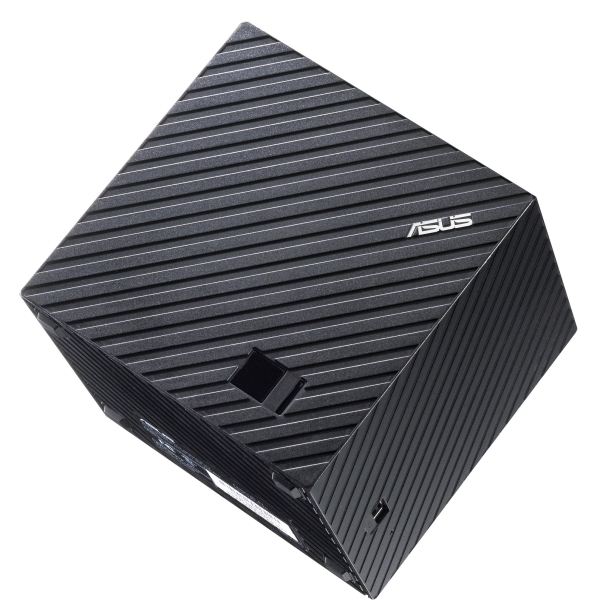

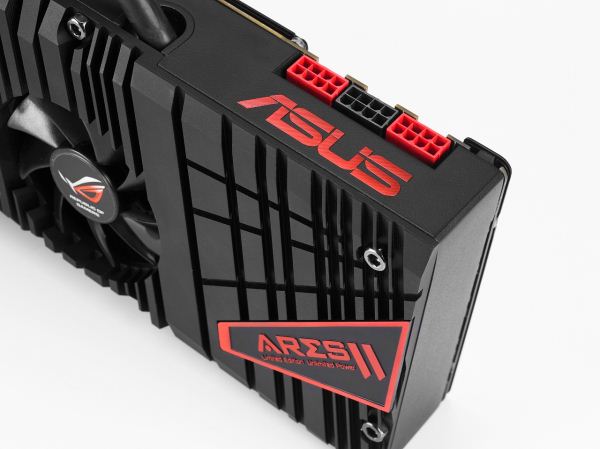
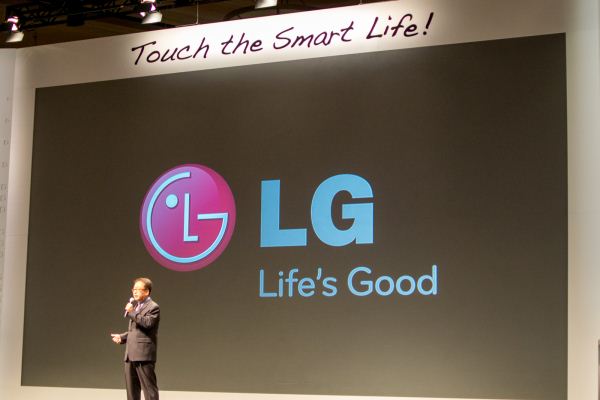
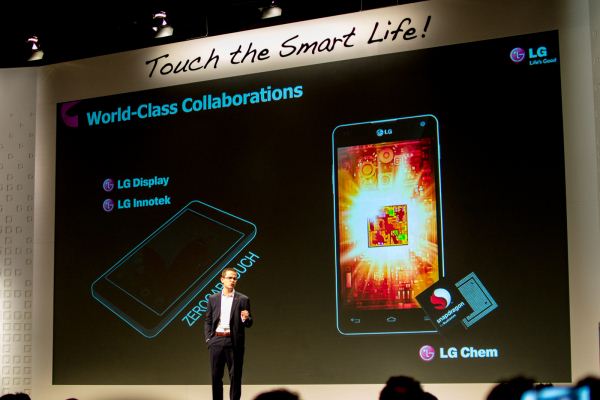

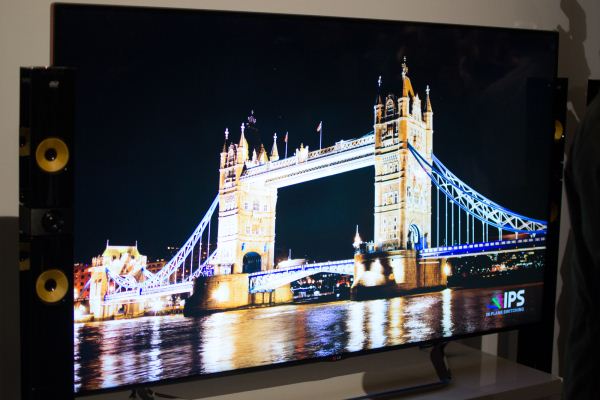
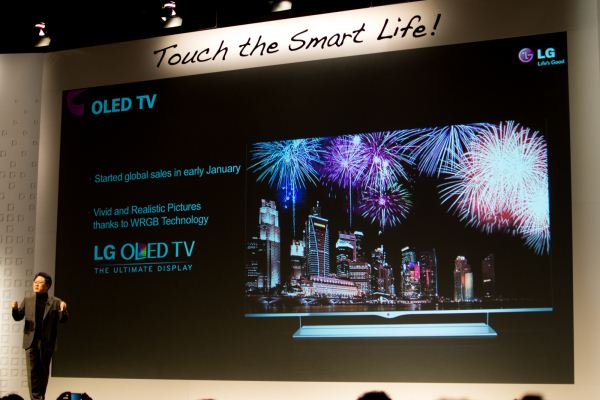
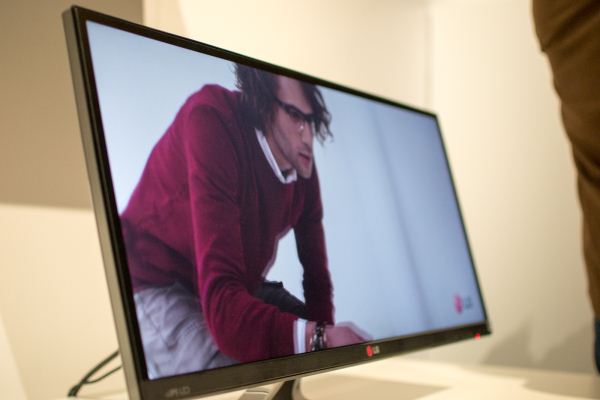
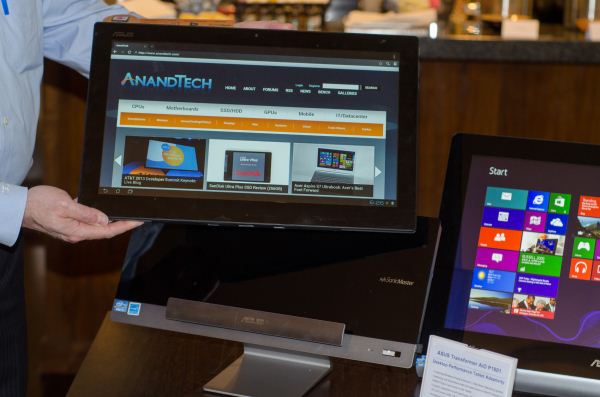
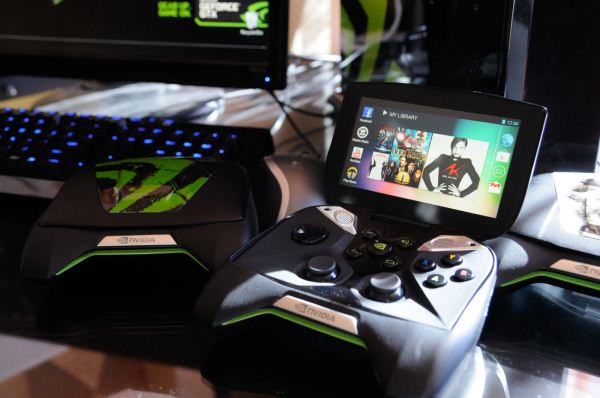
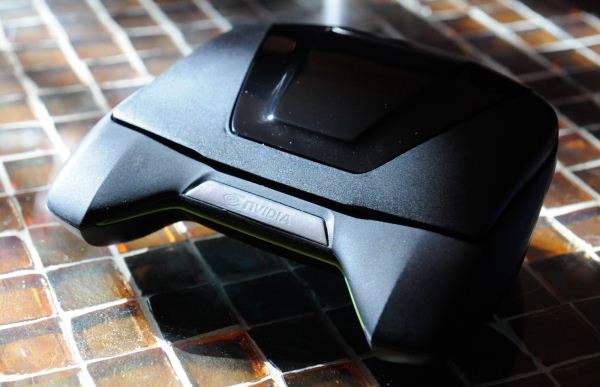




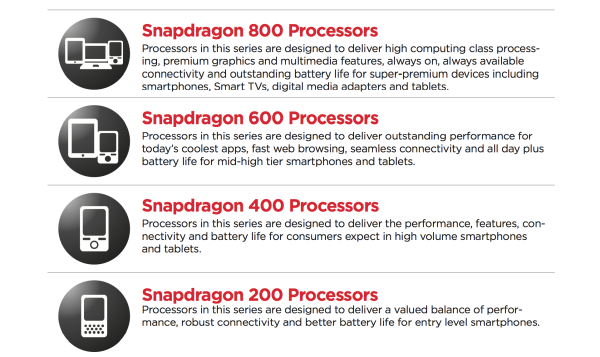
















Bookmarks